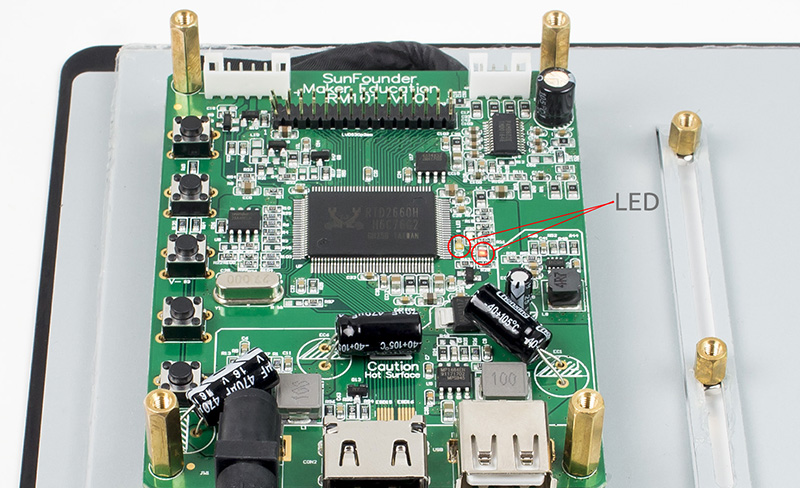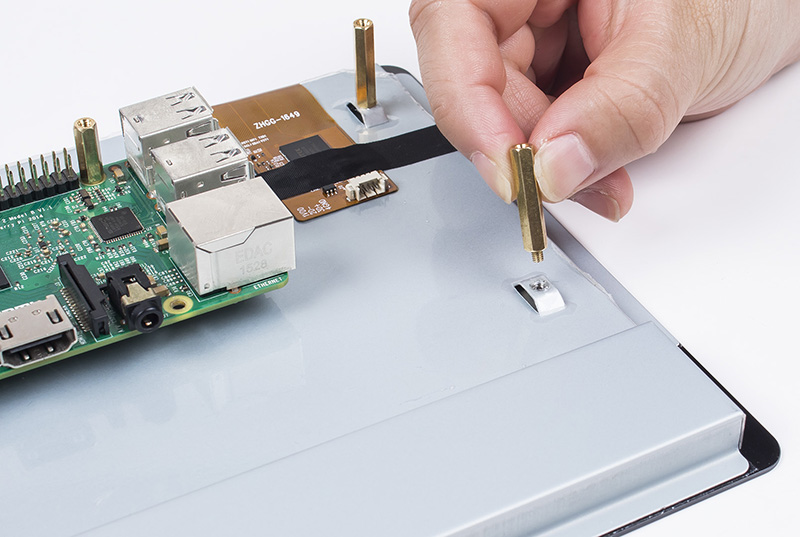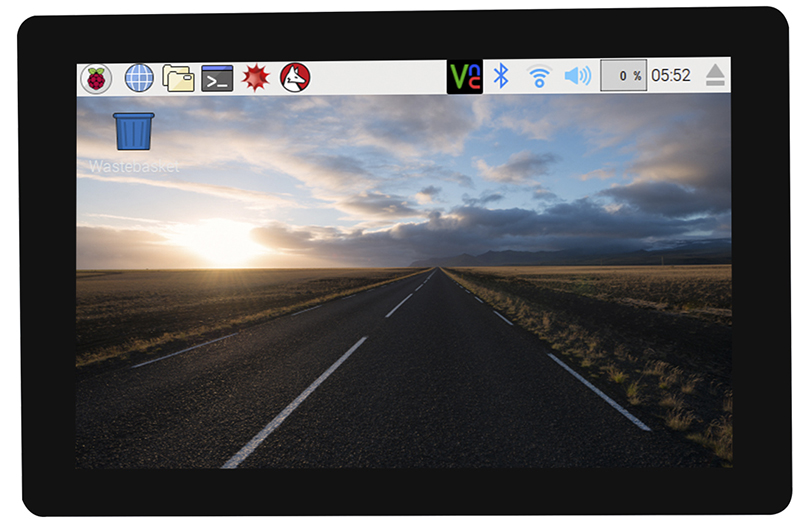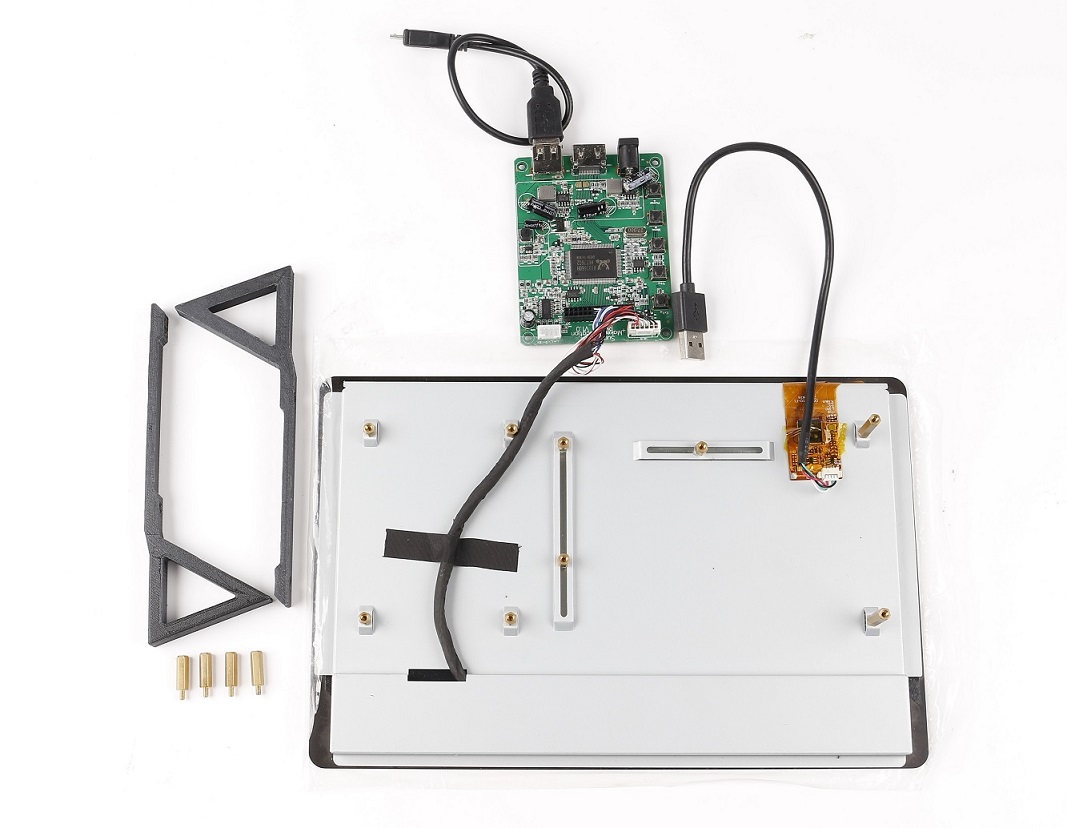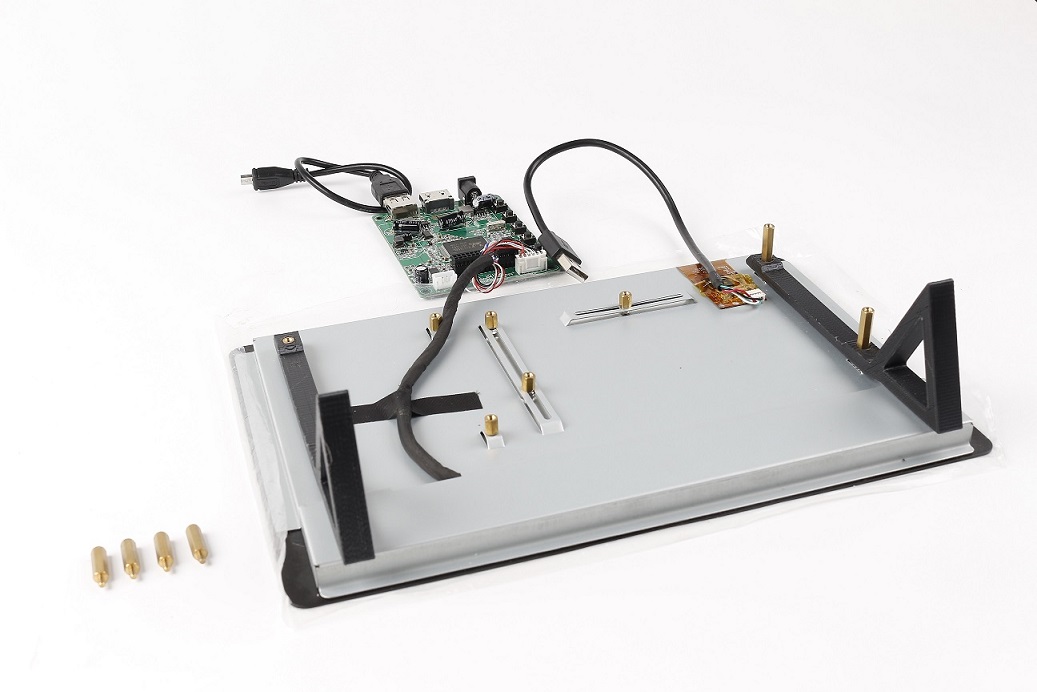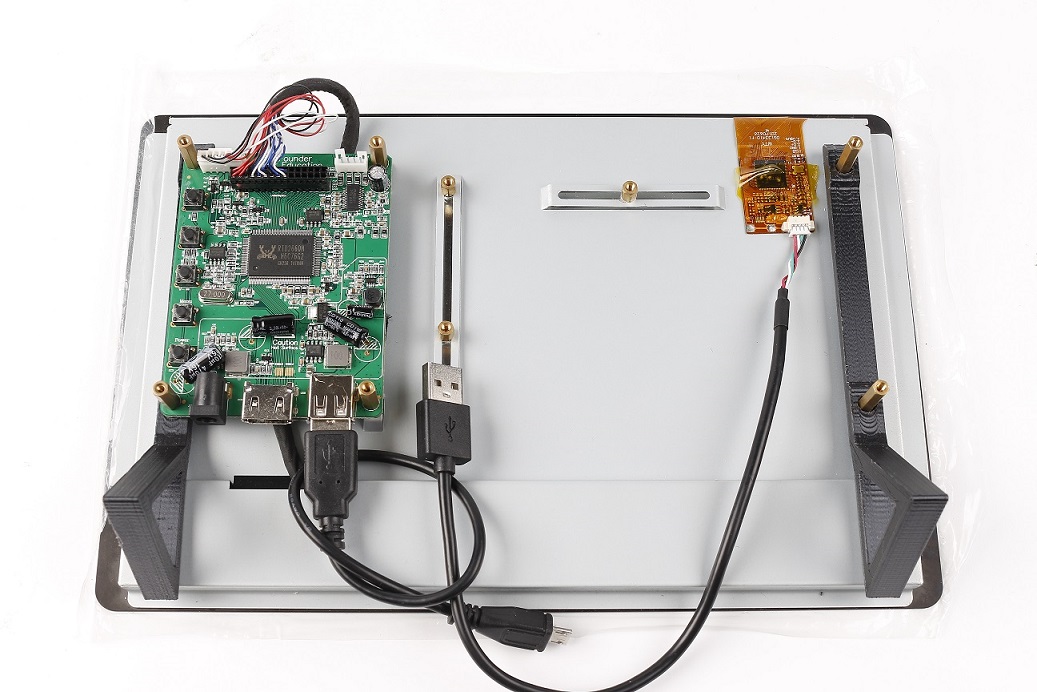Difference between revisions of "10.1 Inch Touch Screen for Raspberry Pi"
(→3D-printed touch screen support) |
(→3D-printed touch screen support) |
||
| (One intermediate revision by the same user not shown) | |||
| Line 117: | Line 117: | ||
==3D-printed touch screen support== | ==3D-printed touch screen support== | ||
| − | If you need to place the touch screen more conveniently, you can use a 3D printer to print a support. The relevant files required by the 3D printer are in the attachment:[http://wiki.sunfounder.cc/index.php?title=File:Stand.zip stand.zip][[file:ZIP.jpg]]<br>. The 3D printing process is as follows | + | If you need to place the touch screen more conveniently, you can use a 3D printer to print a support. The relevant files required by the 3D printer are in the attachment : [http://wiki.sunfounder.cc/index.php?title=File:Stand.zip stand.zip][[file:ZIP.jpg]]<br>.The 3D printing process is as follows |
1.Get ready for 3D printing | 1.Get ready for 3D printing | ||
Latest revision as of 10:05, 27 August 2018
Contents
Introduction
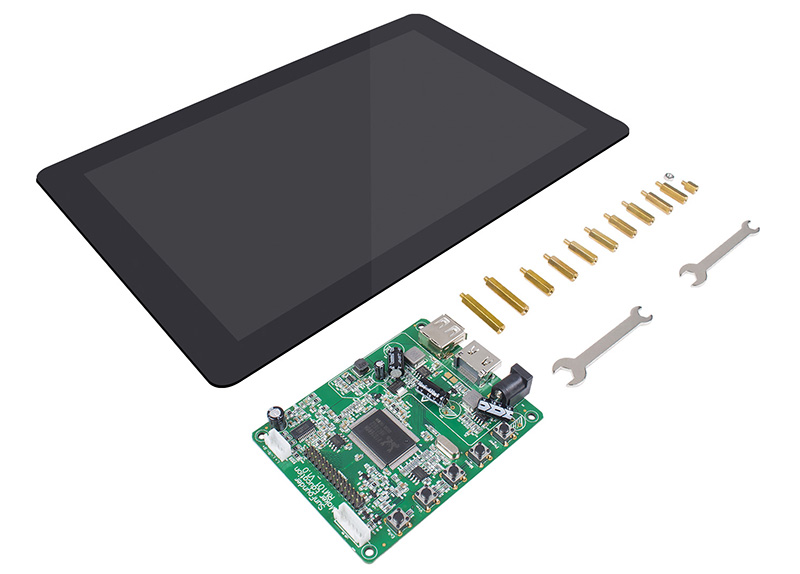
Italic text This SunFounder 10.1" IPS monitor is a 10-point capacitive touch screen with a resolution of 1280x800, bringing you perfect visual experience. It works with various operating systems including Raspbian, Ubuntu, Ubuntu Mate, Windows, Android, and Chrome OS(you may need an USB extension cable).
Features
Resolution: 1280x800
Size: 10.1"
LCD Type: IPS
Power: DC12V/2A
Consumption: 5W
Capacitive touch
10-point touch screen
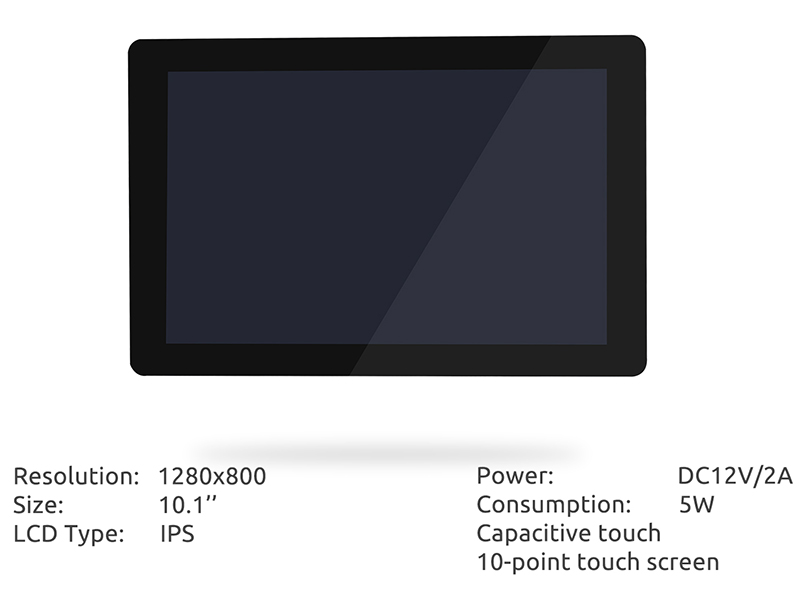
Functions Description
Indication Lights
There are 2 LED indicators on the main board of the screen to show different signals:
Power on the screen and both the 2 LEDs will light up immediately.
If there's no HDMI signal, then only the green LED will be on.
If there's an HDMI signal, then only the red LED will be on.
Press and hold the switch to power off the display, and both LEDs will be off.
If you press the switch to sleep the device, the red LED will be on.
Buttons
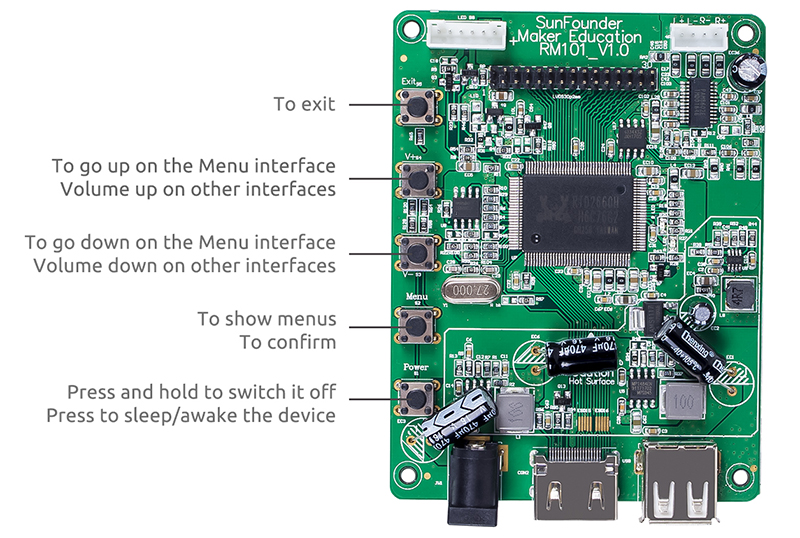
Buttons on the main board and their functions:
a. Power
Press and hold to switch it off
Press to sleep/awake the device
b. Menu
To show menus
To confirm
c. V-
To go down on the Menu interface
Volume down on other interfaces
d. V+
To go up on the Menu interfacev
Volume up on other interfaces
d. Exit
To exit
On one side of the main board there are ports for HDMI input, 12V/2A power input, and 5V/2.5A USB power output.
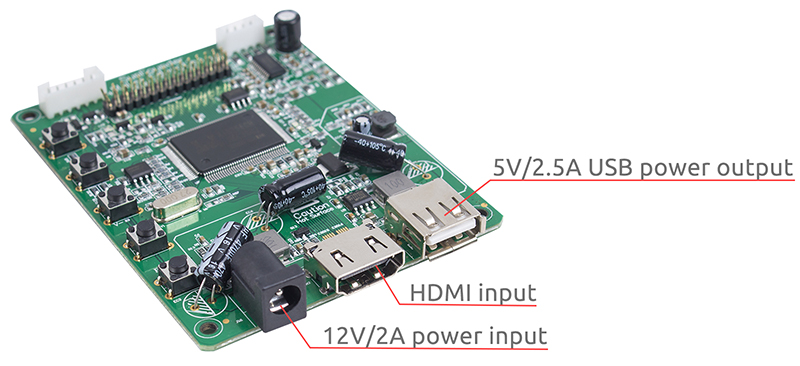
On the other side, you can see ports for 30-pin LVDS ribbon cable, 6-pin backlight control and 4-pin speaker.
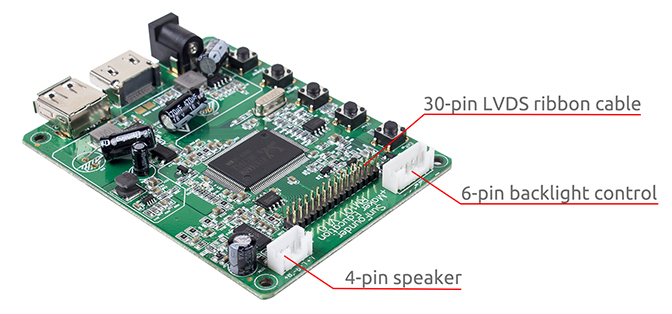
Installation
The screen comes with seven 2.5*14.4 standoffs, two 2.5*22 ones, seven 2.5*6 ones, and some nuts for installing the Raspberry Pi to the screen. Take the following steps to complete the assembly.
Step 1. Fix the main board to the screen.
Place the main board onto the 4 2.5*6 copper standoffs pre-installed on the back case, with the buttons oriented to the case edge, and align the holes on the board and the standoffs.
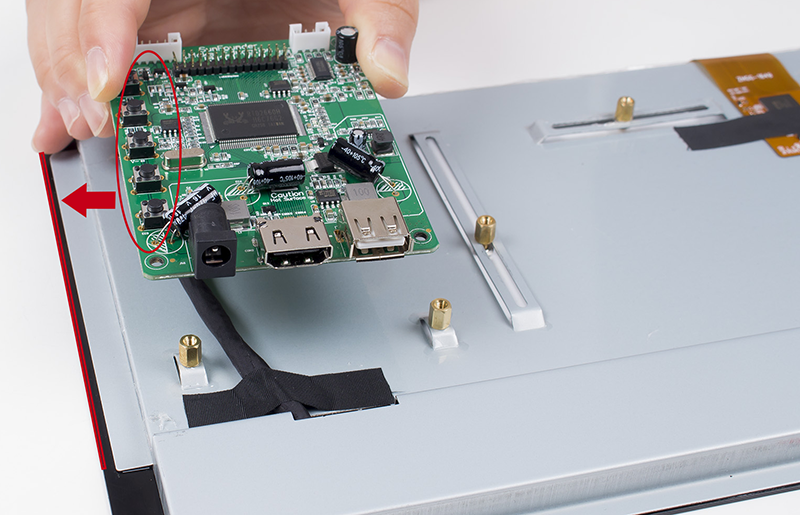
Insert the 2.5*14.4 standoffs into the holes and tighten them.
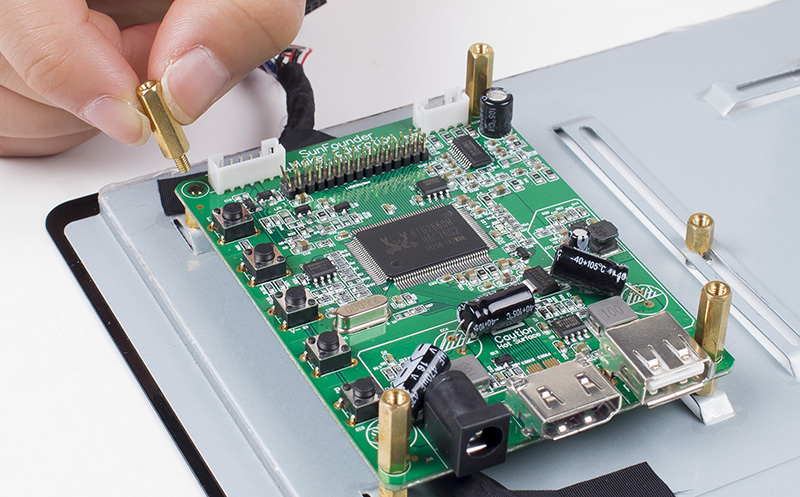
Step 2. Fix the Raspberry Pi (or other boards) on the screen back case.
There are a vertical slot and a horizontal one on the back of the screen, so you can fix boards with different sizes by moving the nuts and 2.5*6 standoffs with the small wrench.
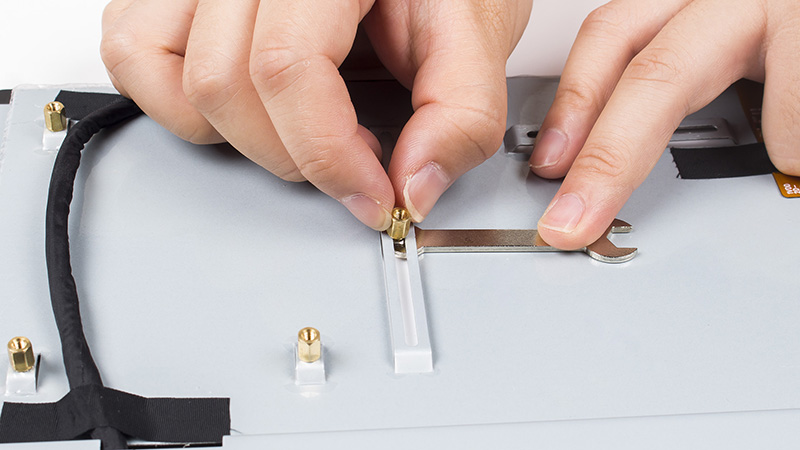
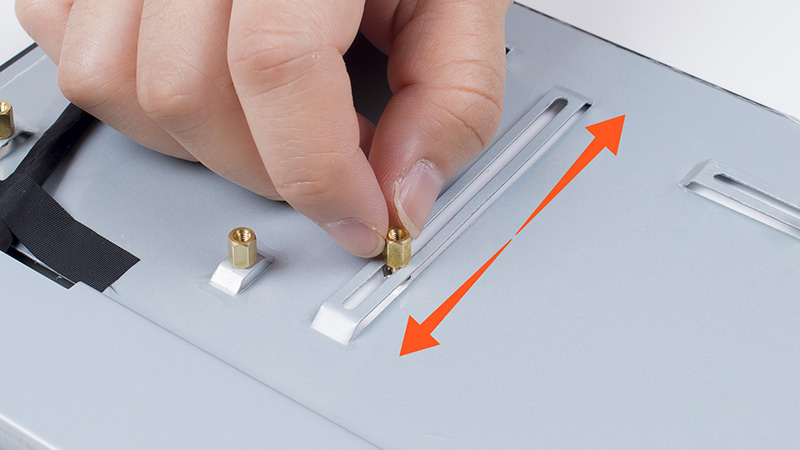
If you want to use a Raspberry Pi with the screen, then you don't need to adjust the standoffs since they are preset for it. Just place the board onto the case with holes on the RPi and the standoffs aligned, insert the 2.5*14.4 standoffs and fasten them.
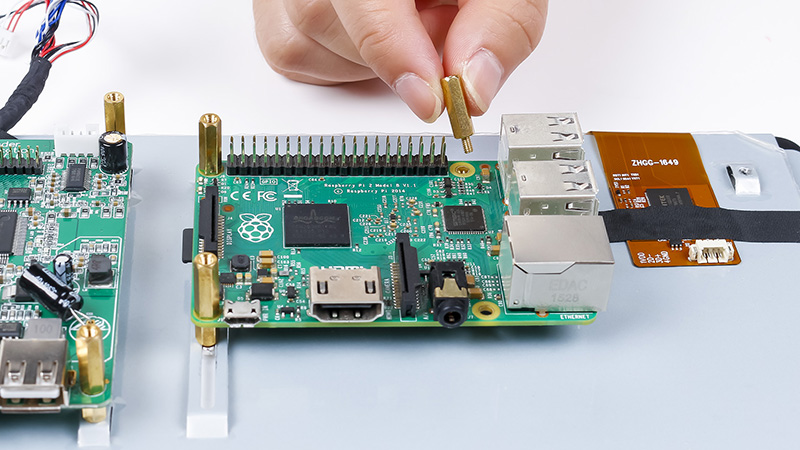
Step 3. Insert the two 2.5*22 standoffs into the holes on the back to keep the screen balanced.
Step 4. Wiring.
1) Plug in the 6-pin backlight control cable into the LED BS port.
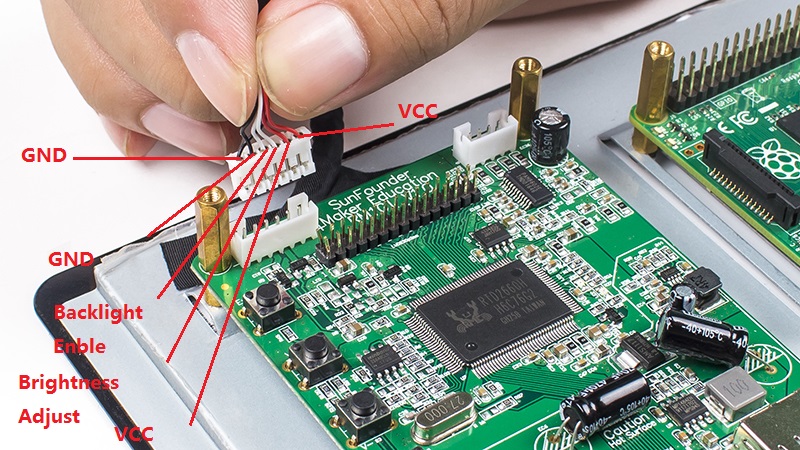
2) Plug the 30-pin LVDS ribbon cable into the 30-pin headers (note that the red wires should be near the buttons side)
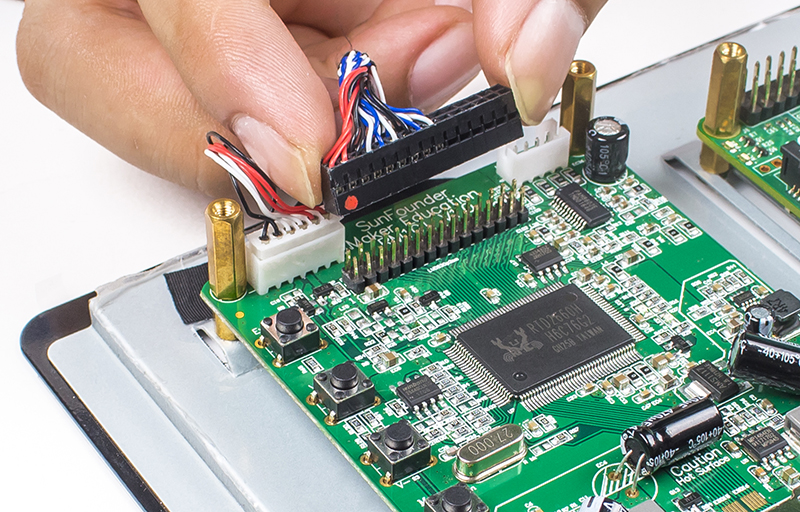
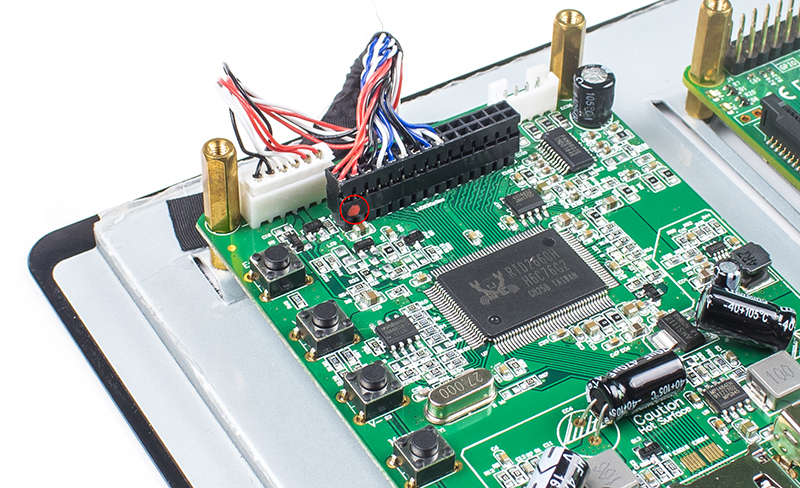
3) Connect the power port of the RPi to the USB port of the main board via a USB cable.
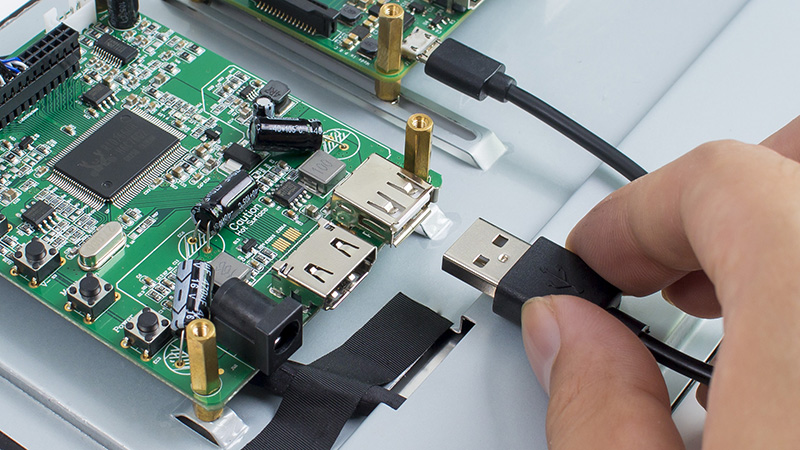
4) Connect the HDMI port of the RPi and the screen via an HDMI cable.
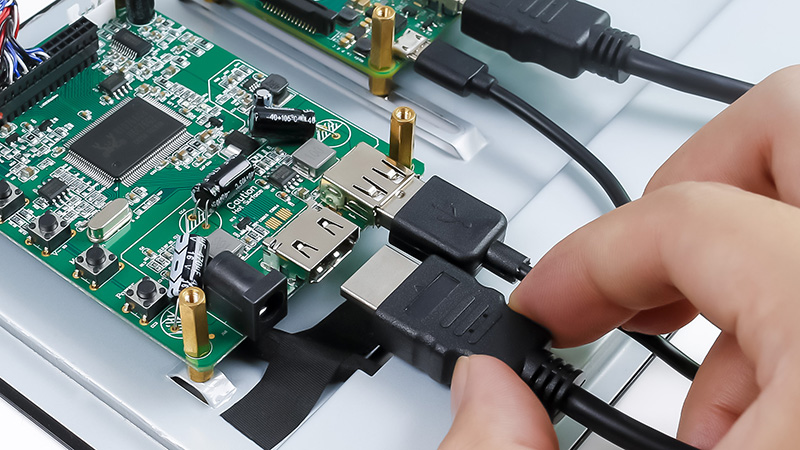
5) Connect the USB port of the RPi and the screen with a 4-pin USB cable.
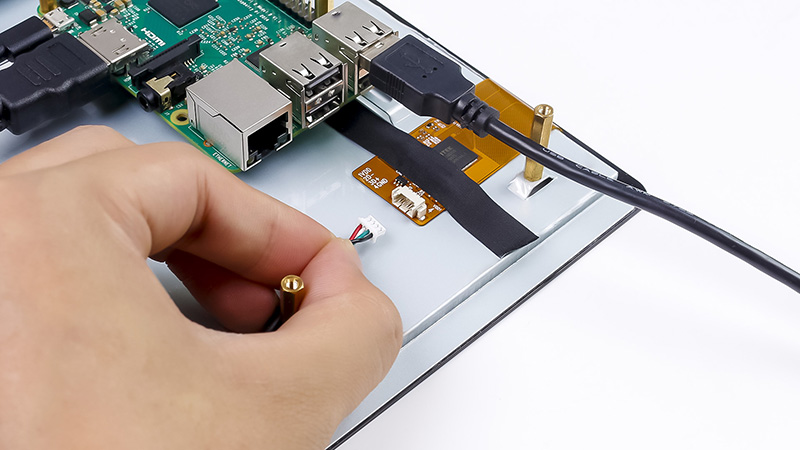
6) Connect the power cable of the supply to power the main board of the screen.
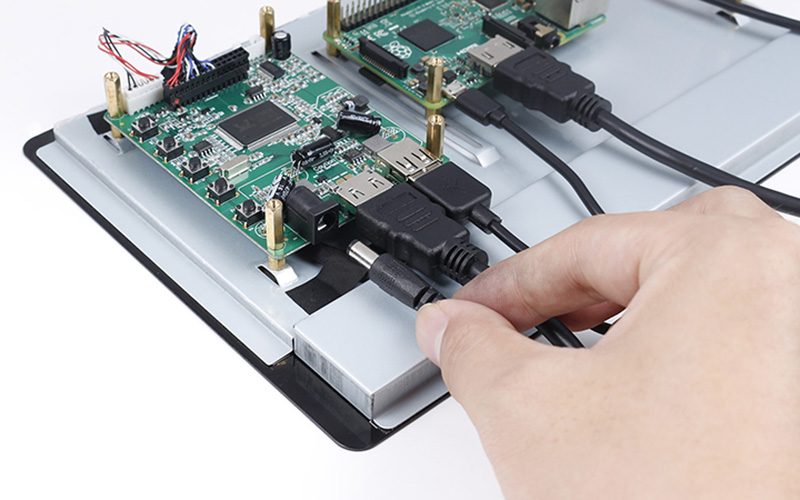
Then power it on and the boot screen will appear.
Install the Virtual Keyboard
Open a terminal and run the command:
sudo apt-get install matchbox-keyboard
After the installation is done successfully, the keyboard will appear on the screen:
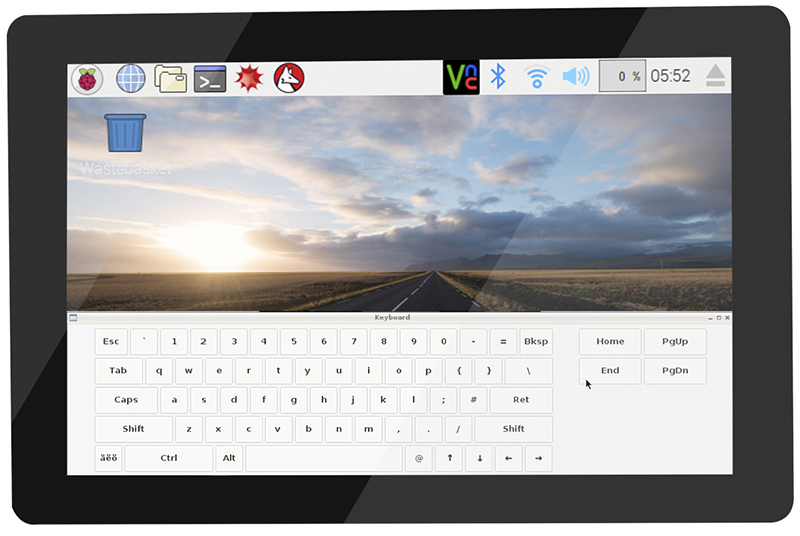
Using as Extension Screen for PC
Connect the computer and the main board via an HDMI cable, and the USB port of the PC and the screen with a 4-pin USB cable(you may need an USB extension cable for connection). Now you can use the screen as an extension one for your computer.
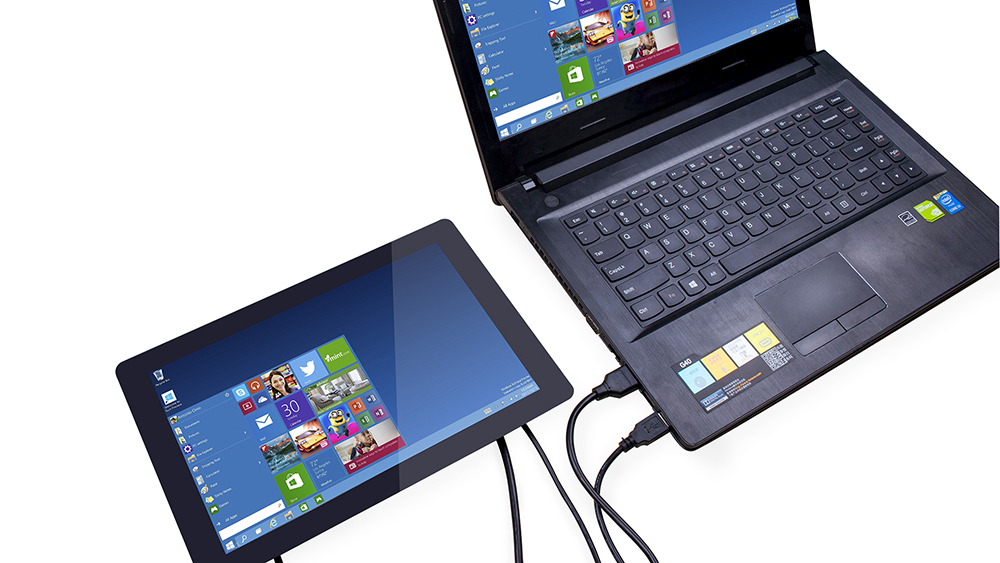
3D-printed touch screen support
If you need to place the touch screen more conveniently, you can use a 3D printer to print a support. The relevant files required by the 3D printer are in the attachment : stand.zip![]()
.The 3D printing process is as follows
1.Get ready for 3D printing
2.Install as shown
3.Finish installation
